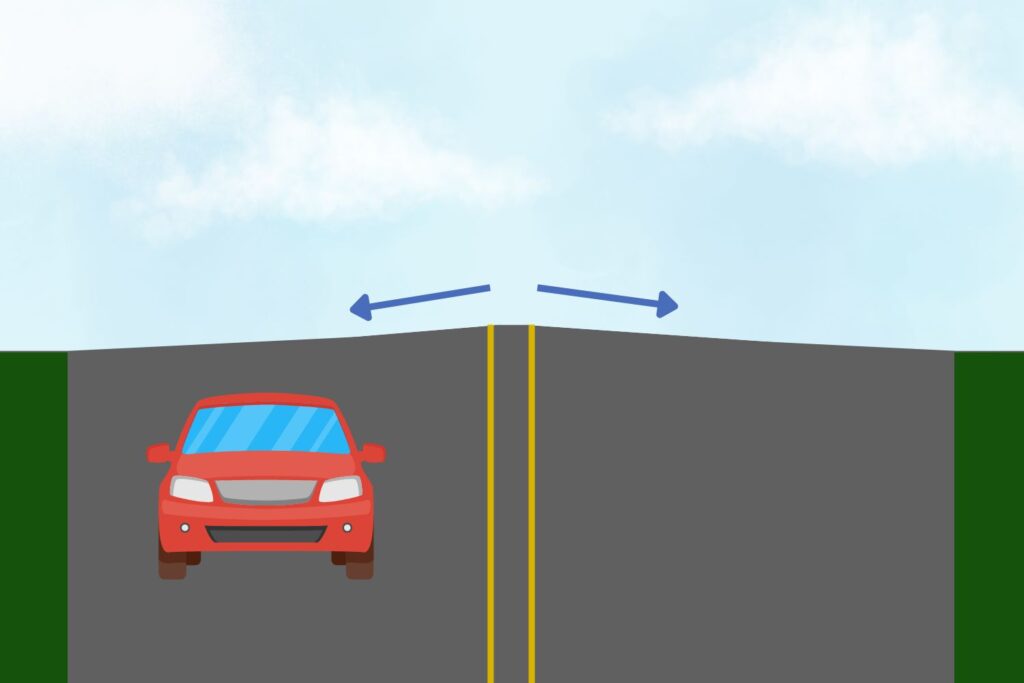While driving, you might notice that the center of the road is slightly higher than the edges. This slight incline is called the road crown. Crowned roads serve several functions in keeping roads safe and maintained.
What’s the Main Function of Road Crown?

Road crown helps to properly direct water to the road’s edges. The slight incline imposed on the road prevents water from collecting and creating puddles in the middle. This is important for several reasons:
Preventing Hydroplaning
Without crown, water can accumulate in the middle of the road and cause vehicles to hydroplane, which happens when a vehicle loses grip because its tires can’t displace standing water fast enough. Keeping standing water to a minimum prevents accidents by keeping the road grippy.
Increasing the Road’s Lifespan
Standing water can penetrate the road surface, creating cracks and weakening the material’s integrity. As vehicles drive over the weakened road, they can erode the surface and create imperfections such as bumps, dips, and cracks. These imperfections tend to align with the wheel tracks. Eventually, they can erode further to become large bumps or even potholes.
Crowned roadways allow water to immediately drain to the side, preventing it from weakening the road’s material. In the long run, this can keep roads in better condition for longer periods.
How Does Road Crown Affect Driving?
Road crown can cause your vehicle to passively steer toward the gutter. Depending on your vehicle and the road’s slope, you might need to make constant steering corrections to keep driving straight. However, the effects of a road crown’s slope decreases at higher speeds since steering wheels are designed to passively straighten themselves the faster you travel.
Driving on a road that has an aggressive road crown might make you think that your vehicle’s steering is misaligned. However, you can verify whether your vehicle has an alignment issue by driving over other roads and checking if your vehicle still passively steers to one side.
Road Crown Specifications
According to the American Association of State Highway and Transportation Officials (AASHTO), the accepted centerline crown slope ranges from 1.5 to 2.0 percent.
However, in curved sections, the outside edge of the road is raised above the road’s centerline.
This means the whole road will fully tilt to one side to allow vehicles to have more grip on the corner, allowing them to preserve their speed. The AASHTO prescribes specific slopes and specifications on how the road is going to be sloped depending on the road’s curvature and the expected vehicle speeds.
Road crown may also vary between paved and unpaved roads. Unpaved gravel roads require a more aggressive crown because water can affect them more. It’s also harder to shape an unpaved road. Paved roads resist water and just let it run over the surface.
Road crown might not be something you typically notice while driving, but the subtle slope has a big impact when it comes to maintaining roads and keeping them safe during rainy days.
Next time you’re on the road, take a moment to observe this subtle yet essential feature that plays a vital role in keeping our journeys smooth and safe.
Any information provided on this Website is for informational purposes only and is not intended to replace consultation with a professional mechanic. The accuracy and timeliness of the information may change from the time of publication.


























